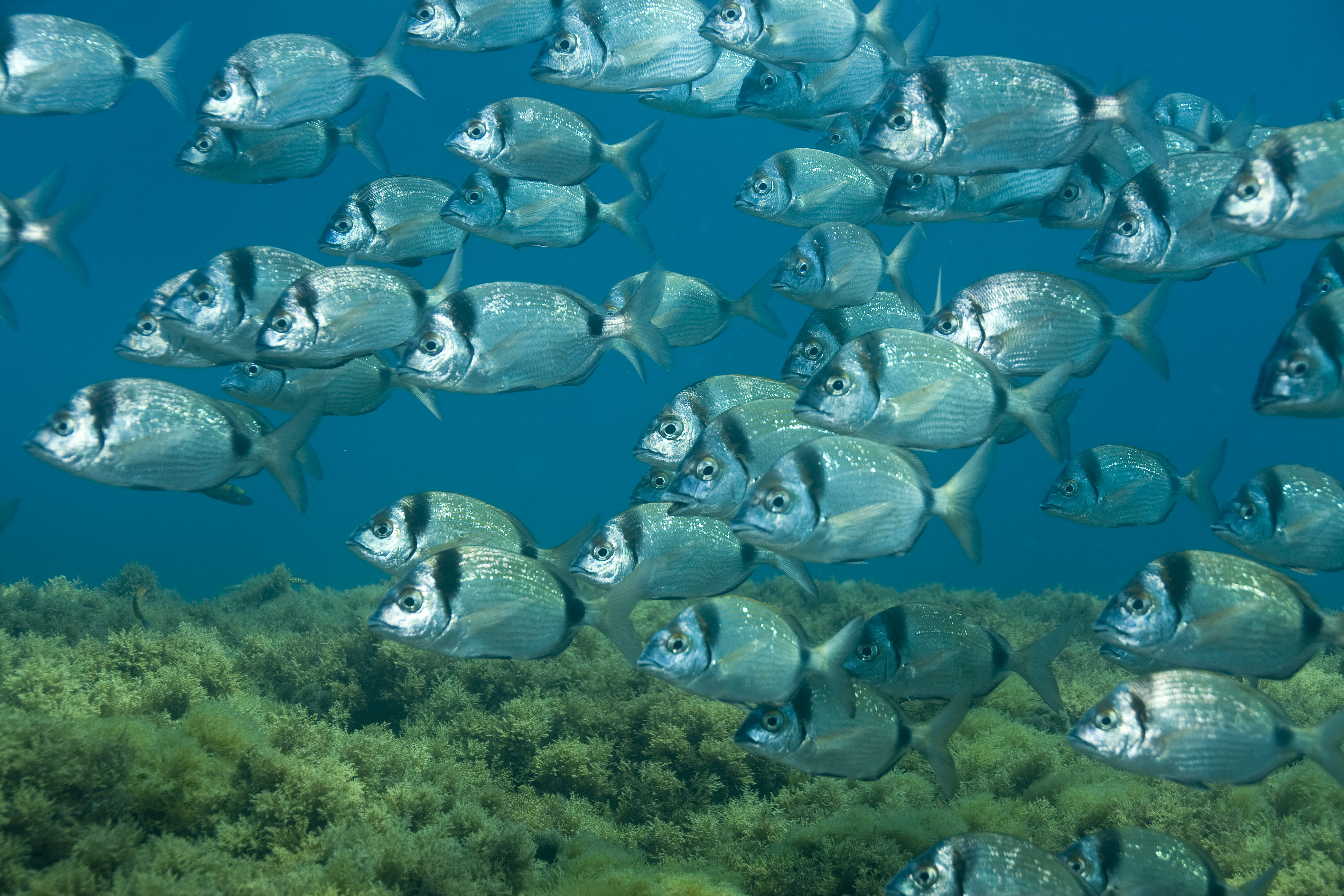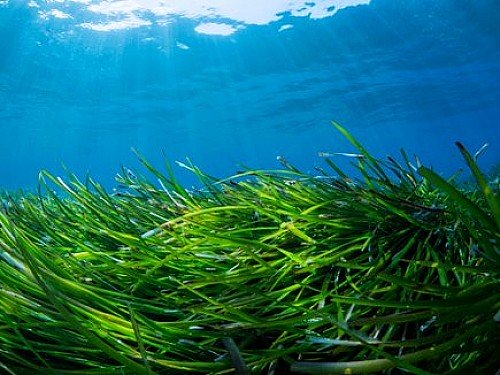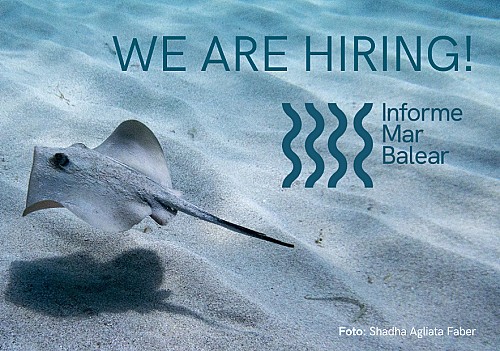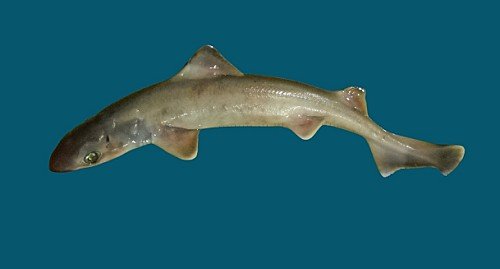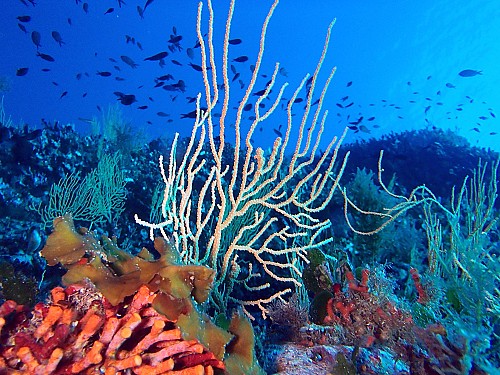The number of fish in the marine reserves is increasing and the areas are more attractive for diving.
The BALEARIC SEA REPORT (IMB) 2022 has compiled updated information on the different types and status of marine protected areas (MPAs), the benefits that the sea brings us, the situation of the fishing sector in the Islands, and the main species exploited. These are some of the results shown in the new chapters published: Marine Protected Areas, Benefits and Fisheries.
The area of Marine Reserves of Fishing Interest has increased since 1982 to 664.4 km2, but fishing is prohibited in only 7% of this area (0.16% of the Balearic Sea). This value is far from the commitment assumed by the Spanish Government to protect 10% of the marine surface with a high level of protection.
Most MPAs have seen increases in the biomass of fish vulnerable to fishing over the years of protection: Levante de Mallorca, Isla del Toro, Sa Dragonera, Freus de Ibiza y Formentera, Islas Malgrats, Norte de Menorca, Punta de sa Creu, Migjorn de Mallorca, Bahía de Palma, and Illa de l'Aire. Others, however, show a decrease: Costa Noreste de Ibiza-Tagomago, Parque Nacional de Cabrera, and Parque Natural de s'Albufera des Grau, probably due to fewer fishing restrictions and/or differences between habitats. A benefit of having larger fish populations is that MPAs are more attractive areas for diving; the number of dives per protected km² has quadrupled since 2005.
The IMB has also updated information on fish catches and the state of fish stocks in the Balearic Islands. Fish catches in 2021 decreased by 44% compared to 2002 as a direct consequence of a reduction in the professional fishing fleet. The pink shrimp (Aristeus antennatus) is the species from which most income is derived (€4.5 million per year). At present, the pink shrimp population is in a state of overexploitation.
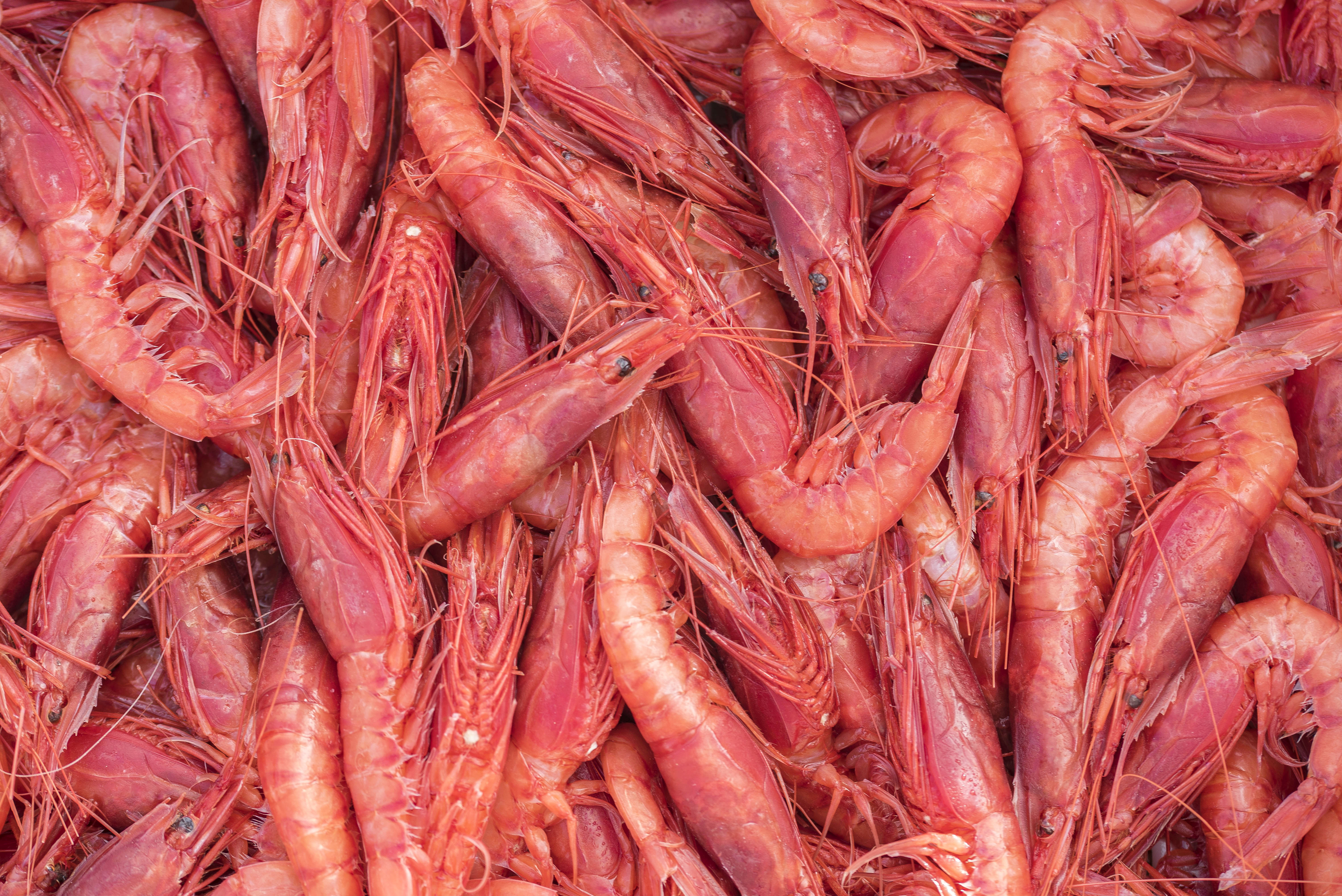
Foto: David Arquimbau.
The Norway lobster (Nephrops norvegicus) is sustainably fished (the catches are below its maximum sustainable yield).
Since 2010, there has been a significant increase in the bluefin tuna (Thunnus thynnus) spawning stock in Balearic Sea waters during the spawning season. Bluefin tuna larval abundances showed minimum values in the first decade of the 2000s and a progressive increase since 2010, which are in line with the trends detected by the fisheries for adult individuals.
The skate Raja clavata is the most caught elasmobranch (sharks and rays) in 2021 and represents almost 50% of all landed catches of these species in fish markets, but there is no data on the status of their populations.
The number of recreational fishing licences increased during the crisis years. There are around 45 recreational fishing boats for every professional fishing boat.
Several studies have shown how the protection of the Balearic Sea brings economic benefits to various sectors of society (e.g. fishing, diving, and tourism). The monitoring of MPA indicators – such as the state of fish stocks – is essential to understand the benefits of protected waters and to direct management efforts where they are needed. Knowledge of how the professional and recreational fleets and fish stocks are evolving is also necessary to improve the sustainability and management of local fish stocks.
The IMB is a collaborative project involving all the marine research institutions of the Islands and public and private entities. It gathers the best available information on the Balearic Sea to improve management efforts and detect information gaps in marine research. The project is 3 years old. The first edition (2020) was published on paper and presented in the Parliament of the Balearic Islands. The second edition (2021) went digital, with all information available to everyone on the website www.informemarbalear.org. In this third edition (2022), the ten chapters of the IMB will be updated throughout the year; four have already been updated and are available on the website: MPA, BENEFITS, FISHERIES, and BEACHES.
Contact:
- Raquel Vaquer-Sunyer (IMB Coordinator): 656 85 46 80 raquel.vaquer@marilles.org
- Natalia Barrientos (IMB Researcher): 680 74 89 92 natalia.barrientos@marilles.org
- Biel Morey (Marine Biologist, Tragsatec): biel@savethemed.org
- Fish monitoring data in MPA.
- Studies of elasmobranchs (sharks and rays) landed in the fish market.
- Pep Coll (Senior Project Technician, Tragsatec): 607 388 085 jcoll@tragsa.es
- Fish monitoring data in MPA.
- Olga Reñones (R+D+I Specialist, Centre Oceanogràfic de les Balears): 971 133 720 olga.renones@ieo.csic.es
- Fish monitoring data in MPAs (specifically Cabrera, Illa de l'Aire, S'Albufera des Grau Natural Park).
- Alícia Florit (Head of the Natural Environment Planning Service - Directorate General for Natural Spaces and Biodiversity - Regional Ministry for the Environment and Territory) 971 176 666 (ext. 76695) aflorit@dgmambie.caib.es
- Information on Xarxa Natura 2000 marine areas and regional management plans.
- Diego Álvarez (Researcher, Centre Oceanogràfic de les Balears): 971 133 720 diego.alvarez@ieo.csic.es
- Data on tuna stocks in the Balearic Islands.
Marilles in the media
- 28/10/2025 Ara Balears: "Milers de barques fermades a morts il·legals perjudiquen el fons marí"
- 19/06/2025 Última Hora: "Así es el alga invasora que buscan los científicos en Baleares"
- 22/03/2025 Eldiario.es: "Delfines desorientados y miles de años de posidonia arrasados: la náutica recreativa dispara la presión sobre el Mar Balear"

